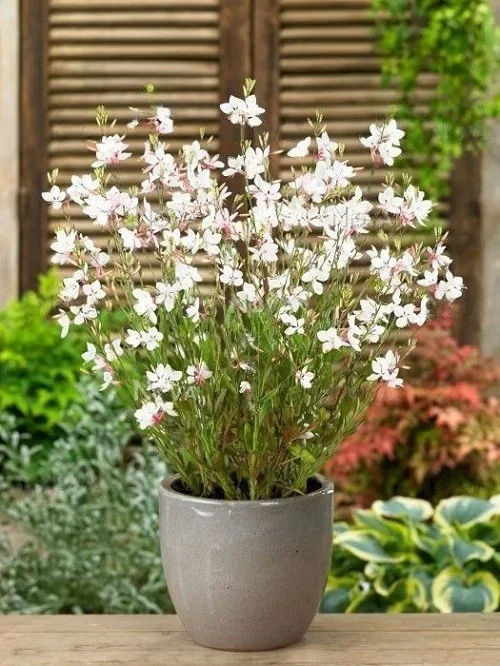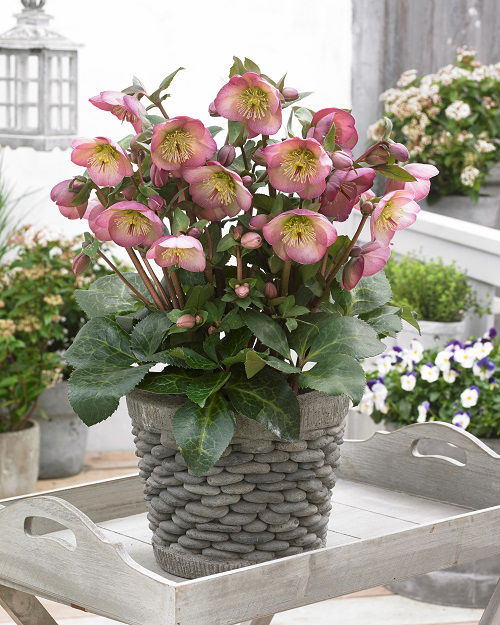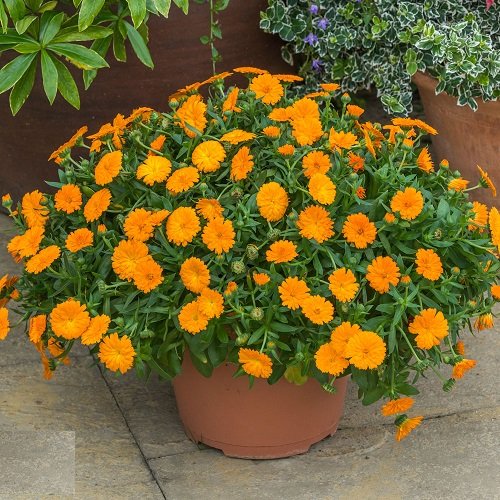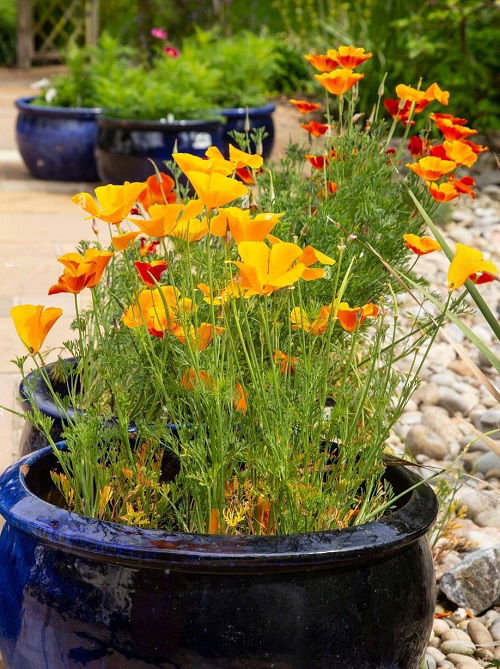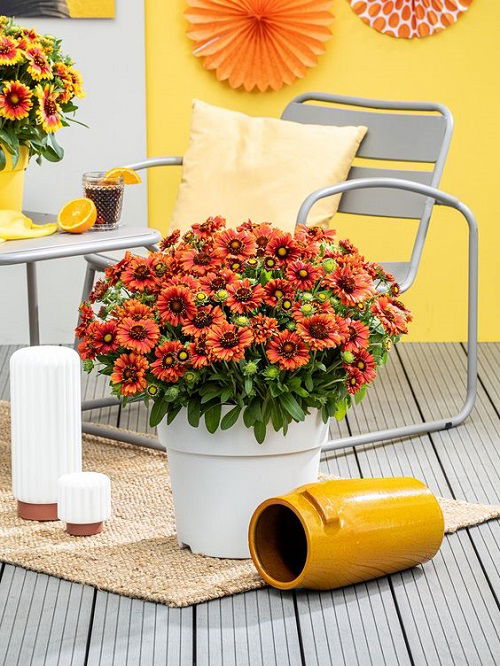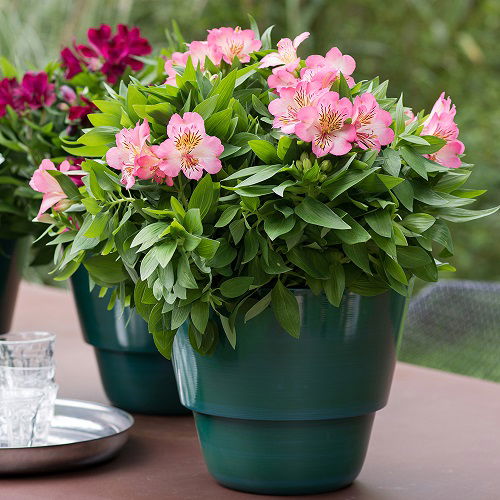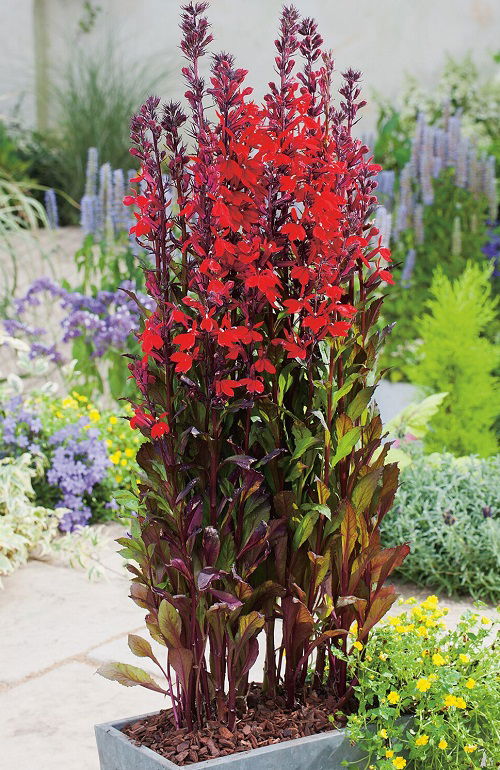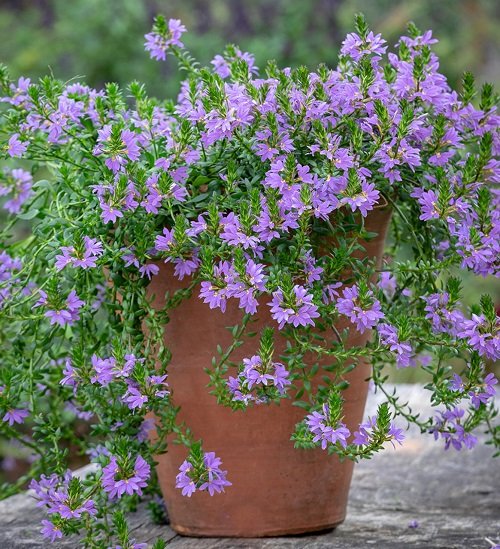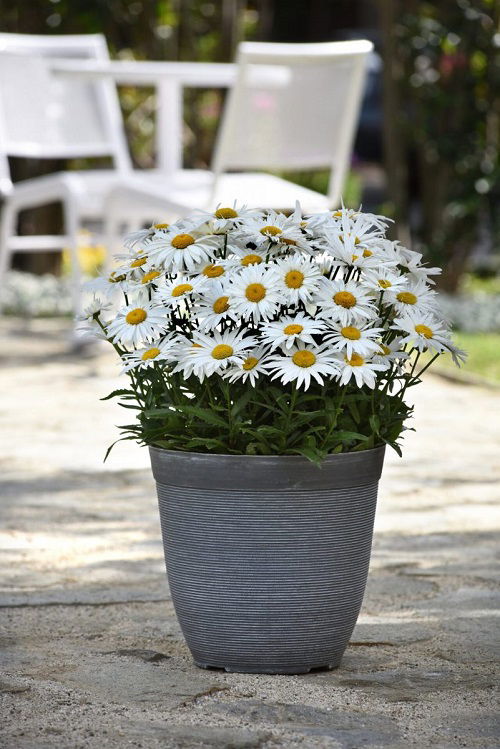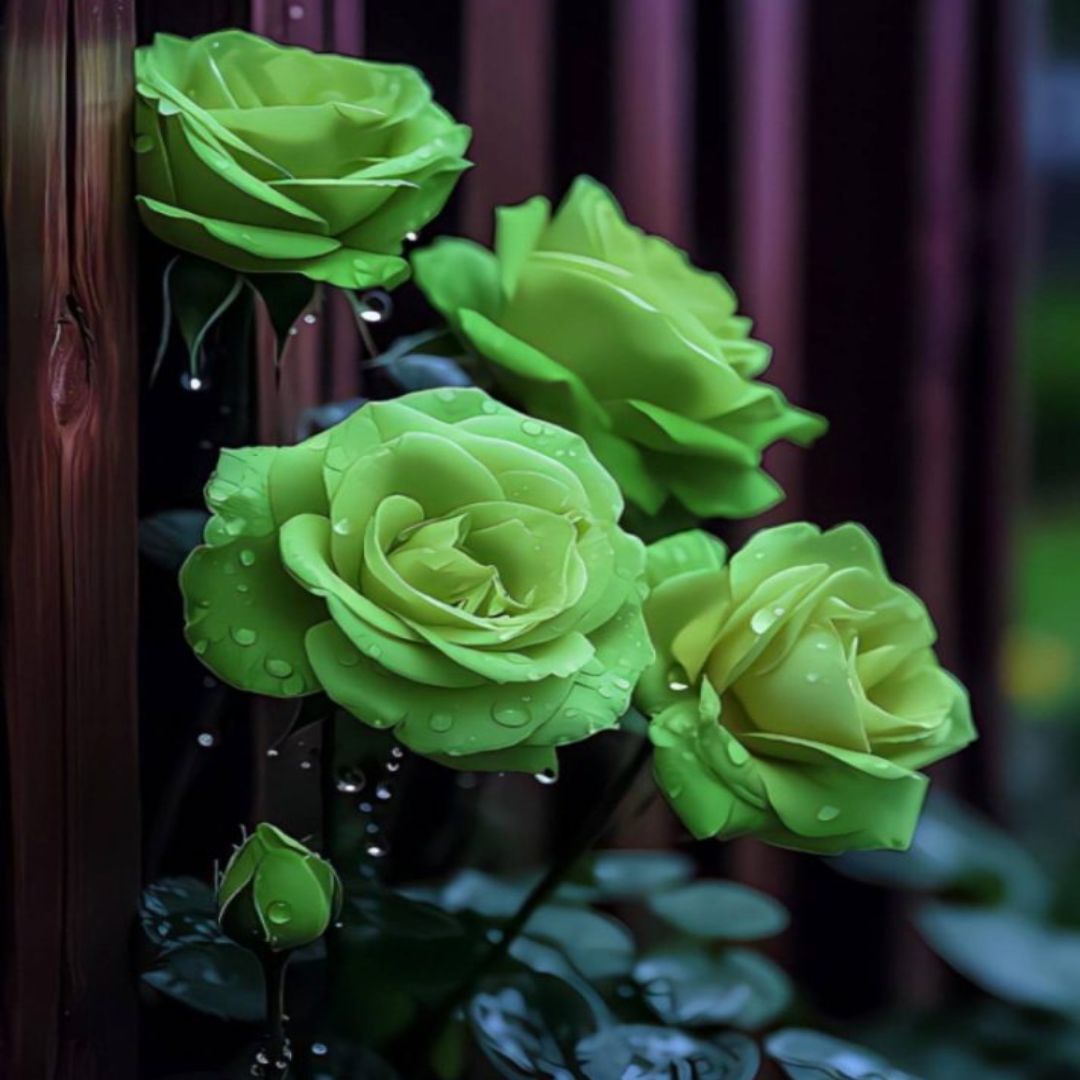Discover the charm of Lesser Known Flowers to Grow in Beautiful Flower Pots – an enchanting guide to unique blooms.
Looking for Lesser Known Flowers to grow? You’ve come to the right place! Explore extraordinary and enchanting flowers as we discover lesser-known types that grow gracefully in lovely pots, bringing a touch of magic to your garden.
Lesser Known Flowers to Grow in Beautiful Flower Pots
1. Love-in-a-Mist
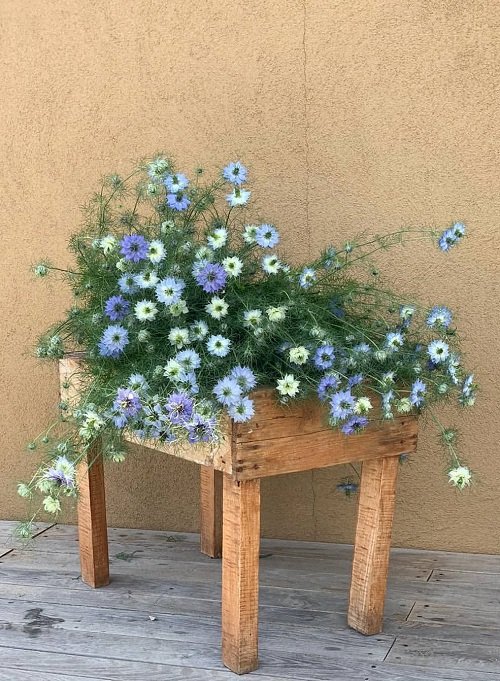
puscinaflowers
Botanical Name: Nigella damascena
Love-in-a-Mist is an exquisite annual choice among lesser known flowers to grow in beautiful flower pots adorned with delicate, airy foliage that seems to cradle its unique blooms. The flowers are surrounded by a mist-like veil of ferny leaves, giving rise to its charming name.
Preferred Habitat: Love-in-a-Mist prefers full sun to light shade and thrives in well-draining soil. This lovely flower is drought-tolerant, making it a great choice for dry, sunny spots in your garden or flower pot.
Flower Fact: In the language of flowers, Love-in-a-Mist symbolizes perplexity and a desire to be noticed.
2. Farewell to Spring (Godetia)
Botanical Name: Clarkia amoena
Farewell to Spring is an enchanting annual flower that signals the end of spring with its burst of vibrant colors. The cup-shaped blooms dance atop slender stems, bidding a cheerful adieu to the passing season.
Preferred Habitat: Farewell to Spring thrives in cool, temperate climates and prefers rich, well-draining soil. It enjoys moderate sunlight and benefits from protection against intense afternoon heat.
Flower Fact: The common name “Farewell to Spring” reflects the flower’s tendency to bloom profusely as spring comes to a close.
Check out Pretty Flowers that Start with ‘G’
3. Million Bells
Botanical Name: Calibrachoa
Considering to opt for some of the lesser known flowers to grow in beautiful flower pots? Million Bells is a delightful and versatile annual flower known for its abundant, small, trumpet-shaped blooms that look like miniature petunias. These cascading beauties create an impressive display of colors in hanging baskets and flower pots.
Preferred Habitat: Million Bells thrives in full sun to partial shade and requires well-draining, nutrient-rich soil to flourish. It’s essential to provide adequate airflow around the plant to prevent diseases in humid conditions.
Flower Fact: Did you know? Calibrachoa is named after Antonio de la Cal y Bracho, a 19th-century Mexican botanist.
4. Wishbone Flower
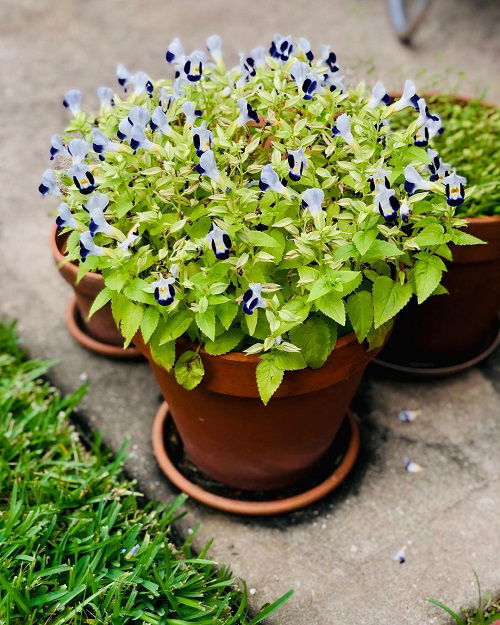
bindaas428
Botanical Name: Torenia fournieri
The Wishbone Flower is a charming annual that brings a burst of color to any flower pot. Its dainty, trumpet-shaped flowers, which come in various shades, adorn the plant’s lush, dark green foliage.
Preferred Habitat: Wishbone Flowers prefer partial to full shade, making them an excellent choice for shaded areas of your garden or patio. They thrive in well-draining, consistently moist soil.
Flower Fact: The name “Wishbone Flower” comes from the unique wishbone-shaped stamen found in the flower’s throat.
5. African Daisy
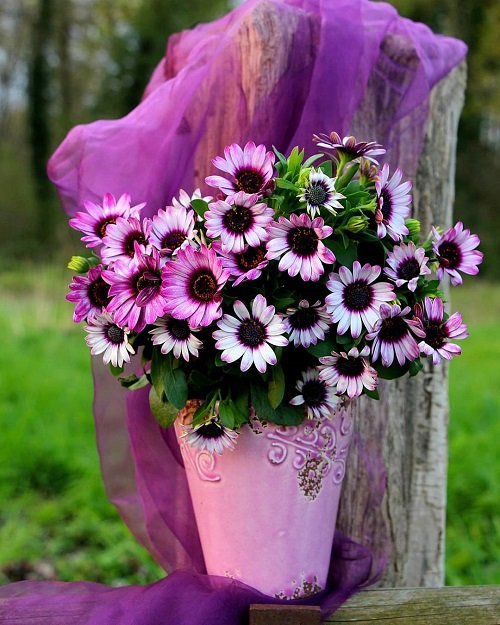
a.bartczak24
Botanical Name: Osteospermum
African Daisy is a vibrant and sun-loving perennial known for its striking daisy-like blooms that close at night and reopen with the sun. This flower comes in various colors, from bold oranges and yellows to delicate purples and pinks.
Preferred Habitat: African Daisies thrive in full sun and well-draining soil. They are drought-tolerant once established but appreciate regular watering during prolonged dry spells.
Flower Fact: African Daisies are native to South Africa and are sometimes called Cape Daisies due to their origin.
6. Angel’s Trumpet

nellkwalther
Botanical Name: Brugmansia
Many gardening enthusiasts tend to overlook the charm of lesser known flowers to grow in beautiful flower pots. But do try this one. Angel’s Trumpet is a breathtakingly beautiful but toxic flowering shrub that is grown as an ornamental in many regions. Its trumpet-shaped, pendulous flowers emit a sweet fragrance that intensifies in the evenings.
Preferred Habitat: Angel’s Trumpet prefers a sunny to partially shaded location and fertile, well-draining soil. It’s best suited for larger flower pots due to its eventual size.
Flower Fact: In some cultures, Angel’s Trumpet flowers are associated with mystical properties and are believed to possess spiritual significance.
Here are the Most Beautiful Pink Tropical Plants
7. Texas Bluebell

all-americaselections
Botanical Name: Eustoma grandiflorum
Texas Bluebell is a stunning perennial with bell-shaped, satiny flowers that grace your garden or flower pot with their elegance. These native wildflowers come in various shades of blue, lavender, pink, and white.
Preferred Habitat: Texas Bluebells thrive in full sun to light shade and prefer well-draining, sandy loam soil. They are relatively drought-tolerant once established.
Flower Fact: Despite their common name, Texas Bluebells are not true bluebells and belong to a different plant family.
8. Pincushion Flower
Botanical Name: Scabiosa japonica
Need low-maintenance lesser known flowers to grow in beautiful flower pots? Pincushion Flower is a delightful perennial known for its whimsical, pincushion-like blooms that attract pollinators like bees and butterflies. These dainty flowers come in various shades of blue, purple, pink, and white.
Preferred Habitat: Pincushion Flowers prefer full sun and well-draining soil. They are relatively low-maintenance and can tolerate a range of soil types.
Flower Fact: The genus name “Scabiosa” comes from the Latin word “scabere,” meaning “to scratch,” as some species were used historically for treating skin conditions.
9. Whirling Butterflies
Botanical Name: Gaura lindheimeri ‘Whirling Butterflies’
Whirling Butterflies is a graceful and airy perennial known for its delicate, butterfly-like flowers that flutter in the breeze. These dainty blooms come in shades of white and pink, adding a touch of elegance to any garden. Try these lesser known flowers to grow in beautiful flower pots and watch as your neighbors marvel at your green thumb.
Preferred Habitat: Whirling Butterflies prefer full sun and well-draining soil. They are drought-tolerant once established, making them suitable for sunny and dry regions.
Flower Fact: Whirling Butterflies are named for their charming, fluttering blooms that resemble dancing butterflies.
10. Lenten Rose
Botanical Name: Helleborus orientalis
Lenten Rose is an enchanting perennial that brings early-season blooms to your flower pot when little else is in flower. Its elegant, cup-shaped flowers come in a range of colors, from pure white and soft pink to deep purple and maroon.
Preferred Habitat: Lenten Roses thrive in partial to full shade and prefer well-draining, humus-rich soil. They are winter-hardy and make excellent container plants for cooler climates.
Flower Fact: Despite its name, Lenten Rose is not a rose but belongs to the Helleborus genus.
11. Baby Blue Eyes
Botanical Name: Nemophila
Baby Blue Eyes is a delicate annual flower with charming, sky-blue blooms that evoke the image of a clear, sunny day. This lovely wildflower is a favorite for its easy-going nature and ability to naturalize in various landscapes.
Preferred Habitat: Baby Blue Eyes thrives in partial shade to full sun and prefers well-draining soil. It’s a great choice for woodland gardens and container plantings.
Flower Fact: Baby Blue Eyes is native to California and a popular choice for wildflower meadows and pollinator gardens.
12. Pot Marigold
Botanical Name: Calendula officinalis
Why not experiment with these lesser known flowers to grow in beautiful flower pots? Pot Marigold is a cheerful and versatile annual flower with vibrant, daisy-like blooms that come in shades of yellow and orange. Its petals have culinary and medicinal uses, making it a popular addition to gardens.
Preferred Habitat: Pot Marigolds thrive in full sun and well-draining soil. They are relatively low-maintenance and can tolerate a range of soil types.
Flower Fact: Pot Marigold petals were traditionally used to add a golden color to butter and cheese.
Here are the Best Types of Marigolds + How to Grow them in Pots
13. Sweet William

gardencentermag
Botanical Name: Dianthus barbatus
Sweet William is a charming biennial or short-lived perennial flower with fringed petals that create a textured and eye-catching display. Its clusters of flowers come in a delightful range of colors, including pink, red, white, and bicolor.
Preferred Habitat: Sweet William thrives in full sun and well-draining soil. It’s a great choice for containers, borders, and cottage-style gardens.
Flower Fact: Did You Know? Sweet William is named after the English folk hero, William of Orange.
14. California Poppy
Botanical Name: Eschscholzia californica
California Poppy is a radiant wildflower known for its satiny, cup-shaped blooms in shades of orange, yellow, and cream. This drought-tolerant and self-seeding annual is a symbol of the Golden State and a pollinator favorite.
Preferred Habitat: California Poppies thrive in full sun and well-draining soil. They are perfect for container gardens in dry and sunny locations.
Flower Fact: California Poppy is the state flower of California and is celebrated for its bright and cheerful appearance.
15. Sea Lavender
Botanical Name: Limonium
Looking for lesser known flowers to grow in beautiful flower pots? Sea Lavender is an enchanting perennial with tiny, papery flowers that dry beautifully and retain their color, making them perfect for dried floral arrangements. Despite its name, Sea Lavender is not related to true lavender.
Preferred Habitat: Sea Lavender thrives in full sun to partial shade and prefers well-draining soil. It’s an excellent choice for coastal gardens and sandy soils.
Flower Fact: Sea Lavender is often associated with remembrance and everlasting love, making it a popular choice for memorial gardens and events.
16. Blanket Flower
Botanical Name: Gaillardia
Blanket Flower is a vibrant and long-blooming perennial that adds a splash of warm colors to your container garden. Its daisy-like flowers come in striking combinations of red, orange, and yellow, making it a versatile choice among lesser known flowers to grow in beautiful flower pots.
Preferred Habitat: Blanket Flowers thrive in full sun and well-draining soil. They are drought-tolerant and perfect for container gardens in hot and sunny regions.
Flower Fact: The name “Gaillardia” honors M. Gaillard de Charentonneau, an 18th-century French magistrate and patron of botany.
17. Columbine

Botanical Name: Aquilegia
Columbine is an elegant and charming perennial known for its unique, spurred flowers that resemble graceful bonnets. This versatile and hardy plant comes in various colors, making it a favorite among gardeners.
Preferred Habitat: Columbine thrives in partial shade to full sun and prefers well-draining soil. It’s a wonderful addition to woodland gardens and mixed container plantings.
Flower Fact: Columbine flowers are often associated with the shape of a dove, giving rise to the name “Aquilegia,” which means “eagle” in Latin.
18. Peruvian Lily (Lily of the Incas)
Botanical Name: Alstroemeria
Here is a unique one of lesser known flowers to grow in beautiful flower pots! Peruvian Lily is a stunning and long-lasting perennial known for its vibrant and variegated blooms that resemble miniature lilies. With their eye-catching colors and striking patterns, Peruvian Lilies are a favorite for cut flower arrangements.
Preferred Habitat: Peruvian Lilies thrive in full sun to partial shade and prefer well-draining soil. They are excellent container plants for gardens with mild winters.
Flower Fact: The genus name “Alstroemeria” honors Baron Claus von Alstroemer, a Swedish naturalist and collector of exotic plants.
19. Bellflower
Botanical Name: Campanula
Bellflower is a charming and diverse perennial known for its bell-shaped flowers that come in various colors and sizes. From petite, dainty blossoms to larger, showy flowers, there’s a Campanula for every container garden.
Preferred Habitat: Bellflowers thrive in full sun to partial shade and prefer well-draining soil. They are excellent choices for mixed container plantings and rock gardens.
Flower Fact: The name “Campanula” comes from the Latin word “campana,” meaning “bell,” due to the flower’s bell-like shape.
20. Cardinal Flower
Botanical Name: Lobelia cardinalis
Cardinal Flower is a stunning and dramatic perennial with striking spikes of vibrant red flowers. This native wildflower attracts hummingbirds and butterflies, making it a must-have for pollinator-friendly gardens.
Preferred Habitat: Cardinal Flowers thrive in partial shade to full sun and prefer consistently moist, well-draining soil. They are excellent container plants for water gardens and bog gardens.
Flower Fact: Cardinal Flower is named after the vivid red robes worn by Roman Catholic cardinals.
21. Windflower
Botanical Name: Anemone
Windflowers are delicate and enchanting lesser known flowers to grow in beautiful flower pots known for their graceful, daisy-like flowers. These charming blooms come in various colors, including white, pink, and purple, adding a touch of elegance to any container garden.
Preferred Habitat: Windflowers thrive in partial shade to full sun and prefer well-draining soil. They are excellent choices for woodland gardens and mixed container plantings.
Flower Fact: Windflowers have a fascinating folklore association with the Greek myth of Adonis and Aphrodite.
22. Larkspur

Botanical Name: Delphinium
Larkspur is an elegant and stately perennial known for its tall spikes of vibrant, spurred flowers that resemble the claw of a lark, hence its name. These stunning blooms come in shades of blue, purple, pink, and white.
Preferred Habitat: Larkspurs thrive in full sun and well-draining soil. They are excellent choices for cottage-style gardens and mixed container plantings.
Flower Fact: Larkspurs are members of the Ranunculaceae family and are related to buttercups and anemones.
23. Fairy Fan Flower
Botanical Name: Scaevola aemula
Fairy Fan Flower is a delightful and heat-tolerant option on the lesser known flowers to grow in beautiful flower pots list, known for its unique, fan-shaped blooms that appear to float above its trailing foliage. These charming flowers come in shades of blue, lavender, pink, and white.
Preferred Habitat: Fairy Fan Flowers thrive in full sun and well-draining soil. They are excellent choices for hanging baskets and container gardens in hot and sunny locations.
Flower Fact: The name “Scaevola” comes from the Latin word “scaevus,” meaning “left-handed,” referring to the asymmetric appearance of the flowers.
24. Shasta Daisy
Botanical Name: Leucanthemum × superbum
Shasta Daisy is a classic and cheerful perennial known for its iconic, large, white, daisy-like flowers with bright yellow centers. This versatile and long-blooming flower is a favorite in both formal and informal gardens.
Preferred Habitat: Shasta Daisies thrive in full sun and well-draining soil. They are excellent choices for mixed container plantings and cottage-style gardens.
Flower Fact: The name “Shasta Daisy” comes from the famous Mount Shasta in California, where the flower was first cultivated.



